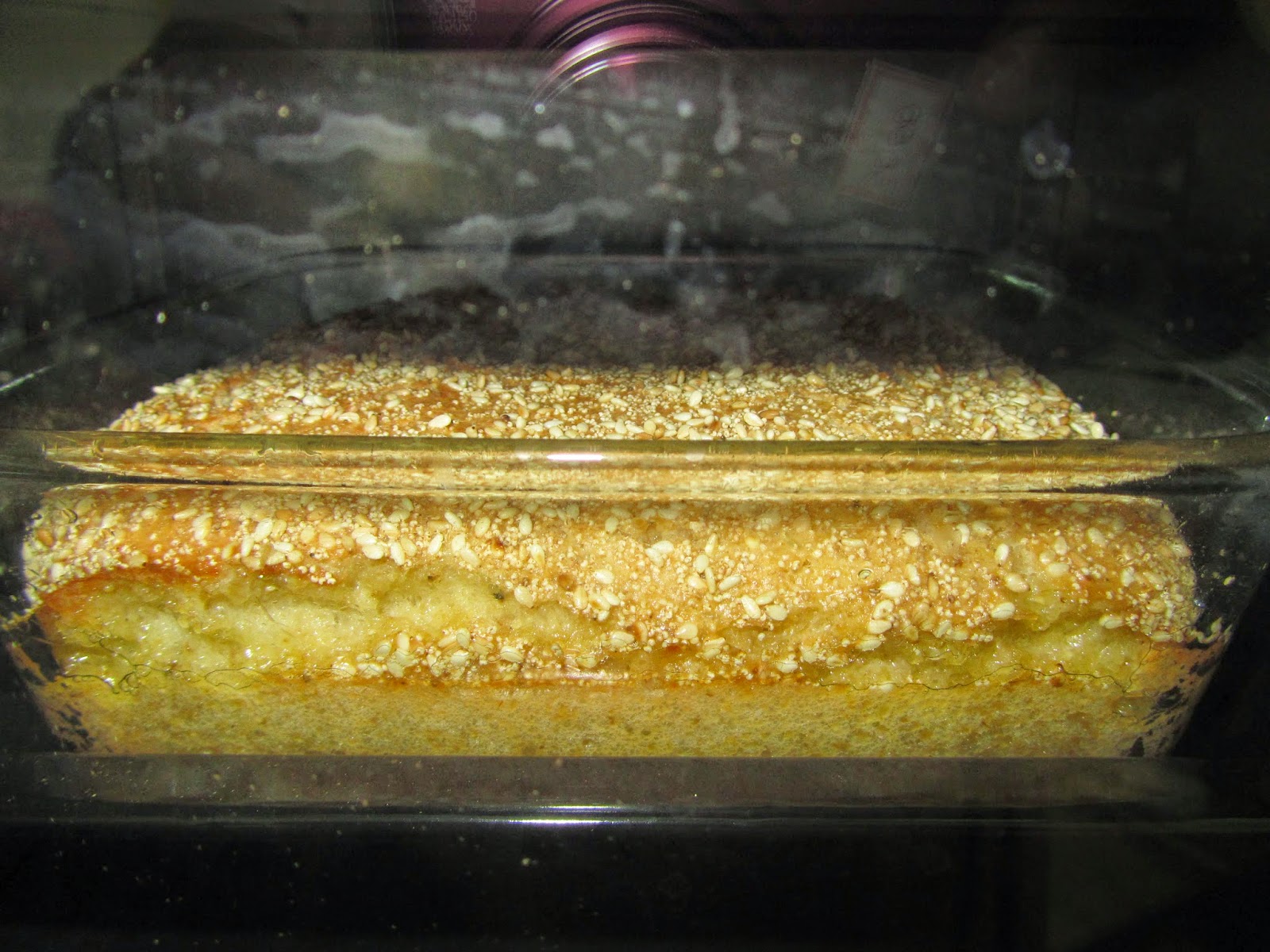As a student of marketing strategy for the last 15 years, I have picked up some jargon from the field, including the words 'pull' and 'push'. They mean one thing in marketing but in this post, they mean quite something else! Sometimes the pull of a memory is so strong that it's almost a physical sensation, but this is not why I attempted this dessert. It was push - I needed to push out some brown semolina (brown sooji/godhuma rava - I had the fine variety) from my kitchen. A good way to exhaust it is to find things to make with it other than upma with vegetables, which seems to be the most common use for it. You can use ordinary white sooji/semolina.
Then I did something that marketers, especially retailers, are unhappy about. When I went to look for the coconut milk cartons that I usually buy, I saw that they were dated April. And this was September. I scrabbled further into the dark recesses of the shelf and found some packed in July. I took all half a dozen of them and paid for them. (One retailer actually protested when I said I always look for the most recently packed ones - he said I had a duty to pick up the oldest ones which were at the front because if everyone did what I did, the old ones wouldn't sell. Well, I'm not having any of that!)
I had been looking at various recipes for sanwin makin and finally followed this. It was like making a rawa porridge with coconut milk, adding the eggs after the mixture had cooled and then baking it. There were two differences from the original method: I used coconut milk instead of coconut cream and I did not manage to separate the eggs as the whites and yellows just plopped into the bowl one after the other. I ended up beating them and adding them to the pan after it had cooled, at Step 4. For about 25 minutes after I put it in the oven, it stayed flat. Then it rose gloriously.
 sanwin makin
sanwin makin 

 After it had cooled
After it had cooled
Hey, i too look at the back of shelves for the most recently packed ones! No retailer protested yet, coz i do it in secret ;-)
ReplyDeleteI wish i was as enterprising as you at pushing old stock, i think i too have a half packet of year old brown semolina somewhere in my kitchen that's probably not fit for eating anymore. But i love your first two pics so much that i want to buy some more and make this.
ps: i did push some really old stock of black urad and made dal makhani for the first time yesterday. so yay for me!!
Actually, La, the person who said this was a retail management expert whom I met, but whatever, I never listened to him. For the first time in years and years, my pantry is looking a little slimmer than before. It's quite an achievement. But I have a long, long way to go.
ReplyDeleteSometimes if the stock is too old, the dish won't turn out well. I learnt that lesson with naan when I used some old maida.
I must clarify - you can use ordinary sooji/semolina, I just wanted to use up a little of the brown one I have.
I also look for goods at the back of the shelf. I also like another Burmese dish _ the know suey, there is a place in Khan Market , New Delhi that sells only this. Here too the base is coconut milk. Will give this one a try too
ReplyDeleteMy friend's mom too would make khauk swe and several years later, my friend did too. I like it
DeleteI always look for the stuff in back of the shelf first for the fresher stock . I realised this when I had to buy 2 packets of something and one was priced different than the other.
ReplyDeleteUsually the fresh one is priced higher, right? I've noticed that too.
DeleteLooks lovely! Happy Diwali to you Sra.
ReplyDeleteThanks, ET! Hope you had fun during the festival!
Deletewoww awesome one...I recipe that you have used and mentioned in the post seems to be interesting but i hope after following the same i can make it out as the same as you have made....
ReplyDeleteEnjoyed this post. I asked the cooking expert what the difference between coconut milk and cream was. He shrugged his shoulders.
ReplyDeleteHome made Khawk Swe must have been good. I tried it at the khala ghoda festival many years ago and loved it. But it's never tasted the same since. Anywhere.
It's thicker, I guess, perhaps no water used when ground and strained. I've seen only unconvincing explanations when I looked just now. There are videos too. I've enjoyed some Burmese food in this friend's home, very tasty.
Delete